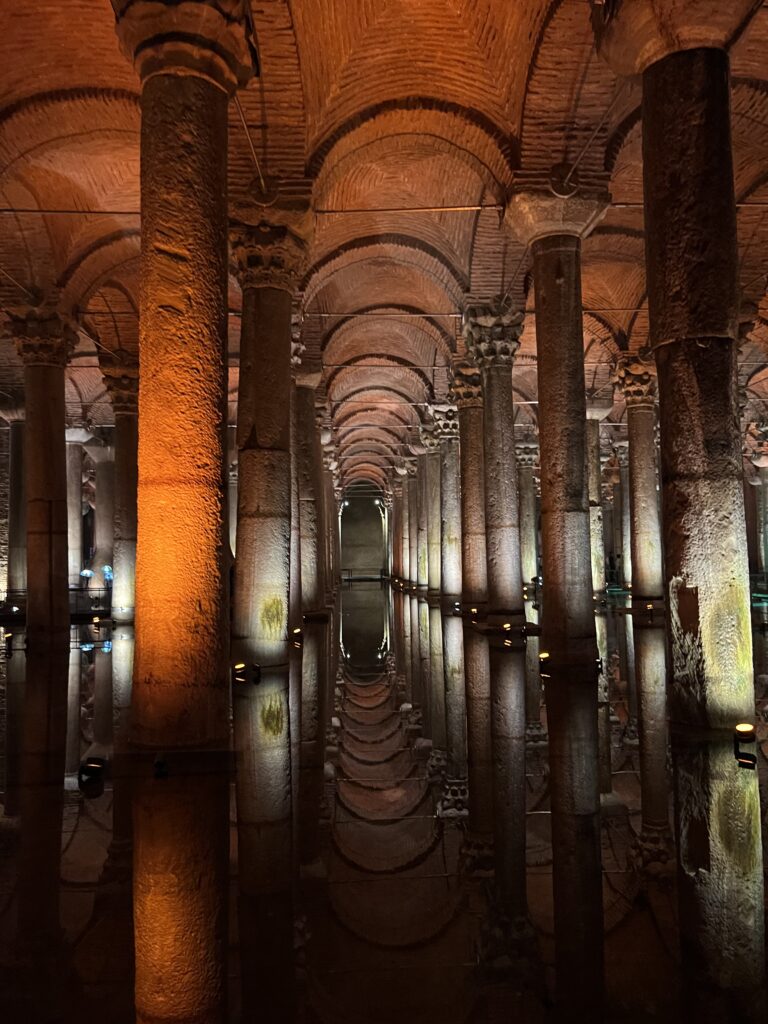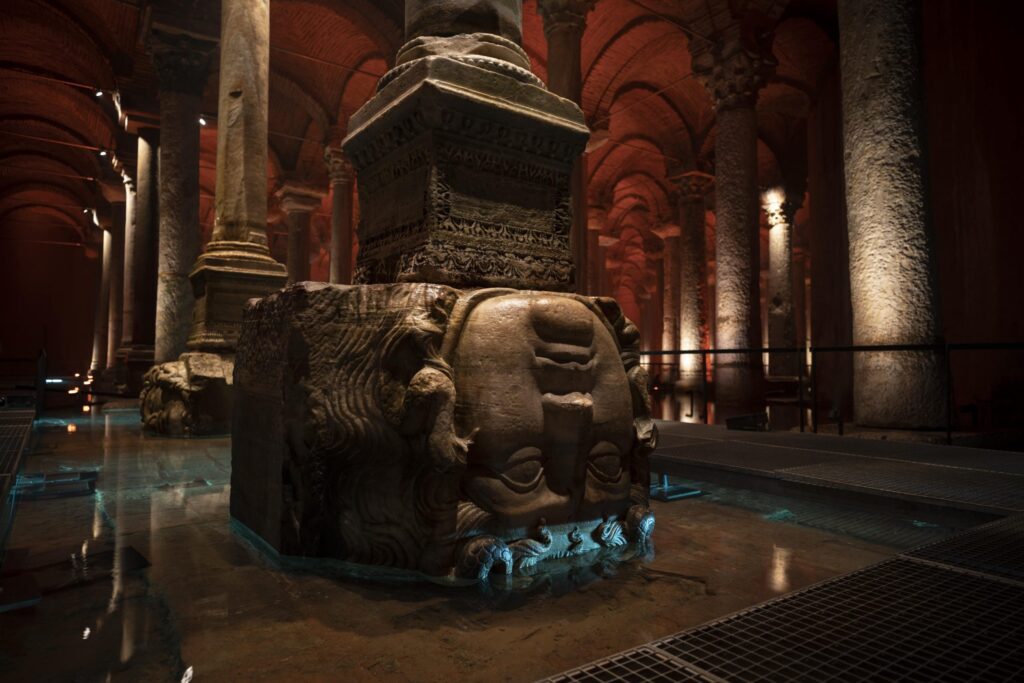You think you know a city once you’ve walked it. I’ve been up the hills of Constantinople, through the spice reek of the Egyptian Bazaar, sat in the smoky corners of teahouses where old men play backgammon and argue about Soccer and the weather. You think you’ve seen all of it—until the city opens a trapdoor.


The thing is, there’s water beneath your feet in Sultanahmet. A whole lake held in stone. But it isn’t a lake, and it isn’t new. It’s old—older than your country. They call it the Basilica Cistern. But that name doesn’t fit. It’s not a basilica, and it’s no ordinary cistern. It’s a sunken cathedral, a forgotten reservoir for emperors, buried beneath the streets like a secret the city no longer talks about.
They say it held 80,000 cubic meters of water once, fed by aqueducts that came all the way from the Belgrade Forest. For whom? The Great Palace of the Byzantine Empire. Justinian, the man who built it, never saw it fill, but he knew what was coming. Empires fall. Wells run dry. Water, though—water survives.
Inside, 336 columns stand in rows, like petrified tree trunks in a flooded forest. Some came from old temples—pagan ones. Reused like bones in a new body. I saw one carved with eyes and tears. No one knows what it means. The guides don’t even try.
And then there’s Medusa. She’s there too, her face used as a column base. Once upright, now placed sideways and upside down. The explanation changes depending on who you ask. A symbol of conquered myths? Or just old stones no one wanted to waste? Either way, her eyes follow you through the water. And her silence is louder than any myth I’ve read.
You walk through it, this cathedral to water, and something changes. You come out into the daylight blinking, disoriented. There are street sellers again, the wail of a call to prayer, children chasing pigeons. But the city doesn’t feel quite the same. Because now you know: it floats on ghosts and water.
And you start to wonder what else is under your feet.
The Myth of Medusa
In ancient Greek mythology, Medusa was once a beautiful mortal woman. She was known for her stunning beauty, especially her long flowing hair. Medusa served as a priestess in the temple of Athena, the virgin goddess of wisdom and war. As a priestess, she had taken a vow of chastity and devoted her life to the goddess.
However, one day, the sea god Poseidon saw Medusa and was overwhelmed by desire. He entered Athena’s temple and either seduced or assaulted Medusa there—sources vary in tone, but either way, this act defiled the sacred space. Athena, furious not at Poseidon but at Medusa for violating her temple, punished her cruelly.
As punishment, Athena transformed Medusa’s beautiful hair into living snakes and cursed her with a monstrous appearance. From that moment on, anyone who looked directly into Medusa’s eyes would be turned to stone. Cast out from society, Medusa became one of the three Gorgons—the only one who was mortal. She fled to live in isolation, deep in a desolate land.
Despite her terrifying form, Medusa became a symbol of both danger and tragic injustice.
Perseus and Medusa
Years later, the hero Perseus was sent on a perilous quest: to bring back the head of Medusa. With the help of the gods—Hermes, who gave him a sickle-like sword, and Athena, who gave him a reflective bronze shield—Perseus approached Medusa as she slept. Using the shield as a mirror to avoid her deadly gaze, he beheaded her with one swift strike.
From Medusa’s severed neck sprang two beings: Pegasus, the winged horse, and Chrysaor, a golden warrior—both fathered by Poseidon.
Perseus took Medusa’s head, which retained its power to petrify, and used it as a weapon on several occasions. Eventually, he gave it to Athena, who placed it on her shield, the Aegis, as a symbol of protection and power.
Legacy of Medusa
Over time, Medusa’s image evolved. In early art, she was a terrifying monster, but later depictions showed her as a tragic figure—punished unfairly by the gods, a victim rather than a villain. In modern times, Medusa is often seen as a symbol of feminine rage, resilience, and the power of transformation.
Travel Dispatch from Istanbul
By Guide Zafer
